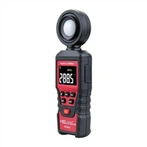The differences between the 7 types of observation microscopes
1, Bright field observation
2, Relief contrast microscope (RC)
3, Differential Interference Contrast Microscopy (DIC)
4, Dark field observation
5, Polarizing microscope
6, Phase contrast inspection method
7, Fluorescence Microscopy
difference
1) Let's take a look at a well-known microscopy method - bright field microscopy, which can be performed by all microscopes;
2) The phase contrast microscope uses the difference in optical path length of the object being inspected for mirror inspection, effectively utilizing the interference phenomenon of light to transform the phase difference that cannot be distinguished by the human eye into a distinguishable amplitude difference. Even colorless and transparent substances can become clearly visible;
3) Differential interferometry is the use of a specially designed Wollaston prism to decompose a beam of light. The vibration directions of the split beams are perpendicular to each other and have equal intensity. The beams pass through the object at two points that are very close together, with slight differences in phase. Due to the extremely small distance between the two beams and the absence of ghosting, the image presents a three-dimensional feeling;
4) Dark field of view is actually dark field illumination. Its characteristics are different from bright field of view, as it does not directly observe the illuminating light, but rather observes the reflected or diffracted light of the object being inspected. Therefore, the field of view becomes a dark background, while the object being inspected presents a bright image. The special accessory required for m. m dark field observation is a dark field spotlight;
5) Polarized microscope is a type of microscope used to identify the optical properties of material microstructures. Any substance with birefringence can be clearly distinguished under a polarizing microscope. Of course, these substances can also be observed by staining, but some are impossible and must be observed using a polarizing microscope;
6) In 1975, Dr. Robert Hoffman invented the ZL. In 2002, ZL expired, and various microscope manufacturers launched RC technology products named after themselves. The principle of the product is that oblique light shines on the specimen to produce refraction and diffraction. The light passes through the objective lens density gradient adjuster to produce different shadows, thereby creating differences in brightness and darkness on the surface of the transparent specimen and increasing observation contrast
7) Fluorescence microscopy is the process of irradiating a fluorescein stained object with short wavelength light to excite it and produce long wavelength fluorescence, which is then observed.






